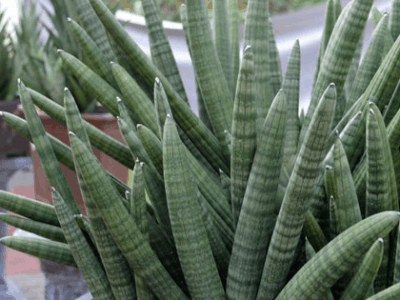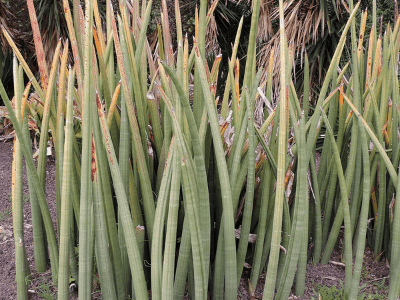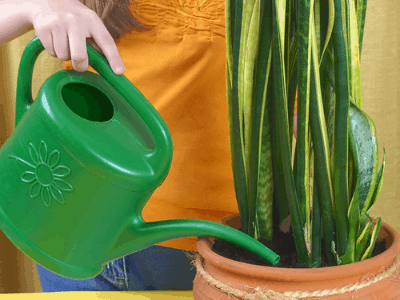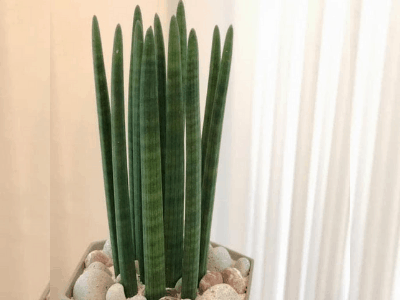Sansevieria Stuckyi Care and Tips
The Sansevieria Stuckyi, also known as the Elephant Tusks Plant, is a low-maintenance succulent.
It was previously thought to belong to the Sansevieria genus, but it is now classified as part of the Dracaena genus.
Mr. Stucky gave this snake plant variety its name. Elephant Tusks Plant is an ornamental plant that is evergreen.
The Sansevieria Stuckyi is a perennial plant that is native to equatorial and southern Africa.
It is prized for its hardiness and perennial characteristics. The Sansevieria Stuckyi…
…has two different foliage looks throughout its life.
The Elephant Tusks Plant matures into a tall, upright plant with cone-shaped leaves.
The horizontal cross stripes with layered green coloring on the leaves make them easily identifiable.
Based on our research from Plantophiles, it said the Sansevieria Stuckyi sports two different…
…foliage looks during its lifetime.
Here we have story from Andreas, about his experience having Sansevieria Stuckyi as his houseplant
Let us hear Andreas’s story
I had always wanted to have a plant at home. Not just any plant, I needed it to be one that would serve both,,,
,,,,as my décor and my “pet“. One day while browsing online, I found an article about Sansevieria Stuckyi…
...a type of snake plant which is easy to care for and requires little sunlight–perfect for me….
….since I currently live in a small apartment with no access to sunlight!
The perfect houseplant was finally within reach and all the way from Africa.
And most importantly, we don’t really need to care it regularly just like another plant!

Better known as the Elephant Tusks Plant, the Sansevieria Stuckyi is another easy-going succulent. Widely understood to be of the Sansevieria genus, it is now categorized under the Dracaena genus.”
Marcel Iseli, author from plantophiles.com
Here’s the main thing…
Soil
The Elephant Tusks Plant prefers loose, fast-draining soil due to its drought tolerance.
Because this plant does not tolerate over-watering, you can use a soil-free potting mix.
Organically enriched fertile soil is another option.

Light
The Sansevieria Stuckyi is a hardy plant. From fully shaded, low-light areas to full sun…
….it can withstand any lighting situation. During hot summer days, it should be kept out of direct sunlight.
The Elephant Tusks Plant is undemanding in mild to tropical garden climates, but prefers semi to full shade.
The leaves of the Sansevieria Stuckyi can vary in color depending on the location. Your plant will have darker greens…
….if it is grown in low light. Your Elephant Tusks Plant’s markings may become brighter…
….and more colorful if it is exposed to bright light.

Watering
Sansevieria Stuckyi only needs a small amount of water to thrive, so it’s an easiest plant care you must have. During the growing season…
…watering should be done every other week. The frequency of watering can be reduced to once a month…
…during the winter months. The Sansevieria Stuckyi, like others in its genus, is not a big drinker.
The Elephant Tusks Plant can go months without being watered and prefers not to be over-watered.
Overwatering your plant can cause root rot, which can lead to death.
Before watering your Elephant Tusks Plant, it’s a good idea to test the soil. You can tell whether or not your plant….
….needs to be watered by simply feeling the soil. Water is only needed when the soil is completely dry.

Temperature
Being a succulent, the Sansevieria Stuckyi has excellent tolerance for heat and dry conditions.
For a good level of growth, temperatures for the Elephant Tusks Plant should be between 18 ° C and 27 ° C
(65 ° F and 80 ° F). Although they are a tough plant, the Sansevieria Stuckyi struggles with the cold.
The plant should be kept in temperatures above 5 ° C (41 ° F). Winter frost can be harmful to the Elephant Tusks Plant’s leaves.

Humidity
For the Sansevieria Stuckyi, humidity is unimportant. This plant can and will tolerate a wide range of humidity levels.
Go on…
Fertilizer
Not only is the Elephant Tusks Plant not a big drinker, but it is also not a huge feeder.
Fertilizing your Sansevieria Stuckyi can be done once during the growing season.
A balanced cactus or all-purpose fertilizer is ideal.
The Sansevieria Stuckyi is known to have a blooming problem. For slightly increased blooming chances…
….fertilizing should be done before the blooming season.
Propagation
There are four ways to propagate your Elephant Tusks Plant. The fastest method of increasing your collection….
….is by division. Divisions can be taken at any time by separating the root ball into parts.
Other methods of propagating your Sansevieria Stuckyi are by cuttings or rhizome offsets.
The most difficult method, however, is seeding. It is very rare for an Elephant Tusks Plant to bloom so it is difficult to get seeds.
Growth
It can take many years for your Sansevieria Stuckyi to reach its full size. This is due to its slow-growing nature.
Mature Elephant Tusks Plants can reach heights between 1m and 2.75m (3ft and 9ft).
The thickness at their base can range between 0.38m to 0.63m (1.2ft to 2ft).
Sansevieria Stuckyi experiences its growth season during the warmer months of the year.
During the Winter months the plant is dormant. The blooming season for the Elephant Tusks Plant…
…takes place during the months of Autumn and Spring. Being of an adaptive nature…
…the Elephant Tusks Plant can survive in places other than in a garden outdoors.
This plant can be grown indoors too and in a range of different items.
It is possible to grow your Sansevieria Stuckyi in a planter, a pot or flowerpot, various types of containers…
…and of course in your garden.
Keep reading…
Potting
The Sansevieria Stuckyi is fantastic to use as a low barrier plant. To grow a large plant, you need to give it…
….a large amount of space. However, the Elephant Tusks Plant does well even with minimal root space.
For the best growing results in pots , you should keep your Sansevieria Stuckyi root-bound.
Your Elephant Tusks Plant needs to be fairly pot bound should you wish for it to produce flowers.
As an indoor plant, you should be sure to keep your Sansevieria Stuckyi clean and dust-free.
Allowing dust build-up can encourage spider mites and mealybugs. To clean your Elephant Tusks Plant…
….the only requirement is a damp cloth. Using any chemicals, detergents, or leaf polishes could negatively affect your plant.
The Sansevieria Stuckyi will grow in a wide variety of soils without any issues.
An open and free-draining soil mix is ideal. Cacti and succulent potting mix is also a good option.
Free-drainage helps to avoid your Elephant Tusks Plant contracting root rot.
Due to their upright habit of growth, the Sansevieria Stuckyi looks its best in a smaller, narrower pot.
Sansevieria Stuckyi Propagation
Propagating your Sansevieria Stuckyi using leaf cuttings is a simple process.
Using a mature leaf, cut 5cm to 7.5cm (2 inch to 3 inch) pieces. In a moist compost mix, plant the cuttings…
…by pushing them about 2.5cm (1 inch) into the soil. The Elephant Tusks Plant cuttings need to be planted…
…matching the original direction of growth. When creating the cuttings, it is advised to make a note…
…of which way is the right way up. If you are wanting to keep the bulky look about your Sansevieria Stuckyi…
…propagating them using rhizome offsets will be the best method.
The offsets of your plant are easily spotted at the base of the plant when removed from its pot.
Using care, the offsets can be pulled apart from each other along with some of their roots.
Once separated, you can start growing more of your Elephant Tusks Plants by planting the offsets individually.
In the case of an offset with no roots, allow it to dry for 24 to 48 hours.
Then, making use of a potting mix with good drainage , plant your offset.
A few weeks to as much as a few months should be given for the offset to grow new roots around its base.
By far, the easiest method of propagating a Sansevieria Stuckyi is by division.
Dividing your plant is as simple as pulling the clumps apart.
These clumps should then be potted up in their own, individual containers.
If dividing your Elephant Tusks Plant is proving difficult, it is recommended you wet the soil.
Wet soil does not only ease the process of division, it also aids in keeping the roots as long as possible.
Although possible, propagating the Sansevieria Stuckyi through the method of seeding is difficult.
It is rare for the Elephant Tusks Plant to bloom flowers, thus making the collection of seeds a problem.
Should you be of the lucky few that have managed to harvest seeds from you, Sansevieria Stuckyi…
….they should be kept in dark, dry conditions until sowing. Seeds should be sowed during the Summer season.
- It is best to keep the soil with your Elephant Tusks Plant seeds lightly moist.
- It is imperative that you do not overwater the plant or allow the soil to dry out. A sunny location with light humidity is ideal. Germination takes between 2 and 8 weeks.
Last but not least…
Some Flowers Are Just Messy
Some indoor plants, such as Dracaena, have sticky nectar that drips from their blossoms.
While this type of plant does not always bloom, it is best to remove the flowers as soon as possible to prevent a mess.
If your plant grows fruit, make sure to select it as soon as possible to prevent a mess.
Indoor palms and plants like Aglaonema Ficus trees are particularly susceptible to growing fruit (rarely indoors)…
…which is initially attractive but quickly becomes shabby. If it is left to rot for an extended period of time…
…it will attract pests and will fall, creating clutter around the plant.
Sum Up
See having Snake plant is good choice for you to have! It’s cool, its famous, it’s easy to have and care!
What else do you need? In this pandemic time like this, is a good choice for you to have an new activity…
…and having snake plant is a good choice for you to have!
Conclusion
Last thing for sure. This plant need to be care carefully, remember plant need the “love” too.
Alright that’s all for today! Do you have any questions about all of this?
Or do you want to add some method to grooming your snake plant?
Let me know your recommendation from the comment below.
Check out more of our posts like this one here!
I hope you can now take care your snake carefully and grow it big!
Thanks for reading this article! Bye!
Frequently Asked Question Around Sansevieria Stuckyi
If you’re looking for a plant that’s visually stunning, sansevieria stuckyi may be…
…the perfect option for you! This tough, versatile plant is perfect for areas where…
…direct sunlight is scarce, and it can grow in a variety of soils and climates.
In this article, we’ll discuss everything you need to know about sansevieria stuckyi…
…plant care, from planting to maintenance. So read on to learn all you need to know…
…about this amazing plant!
Can S. stuckyi be used to treat health problems other than anxiety and depression?
Scientific research on the use of SS. stuckyi for other health problems is inconclusive.
Some studies show promise, while others do not. There is currently no good evidence…
…that SS. stuckyi can be used to treat health problems other than anxiety and depression.
How do I make sure that my S. stuckyi is getting enough water and sunlight?
Sunlight and water: Sunlight is important for the growth of S. stuckyi.
The plant needs direct sunlight to produce succulent fruits. Your stuckyi…
…should get at least six hours of direct sunlight per day. watering the plant…
…regularly will help ensure that the plant receives the necessary amount of…
…water and sunlight.
What are some dos and don’ts when it comes to caring for Sansevieria stuckyi?
Sansevieria stuckyi can benefit from high humidity levels, however, excess…
…watering is not advised as this plant may develop roots that rot.


